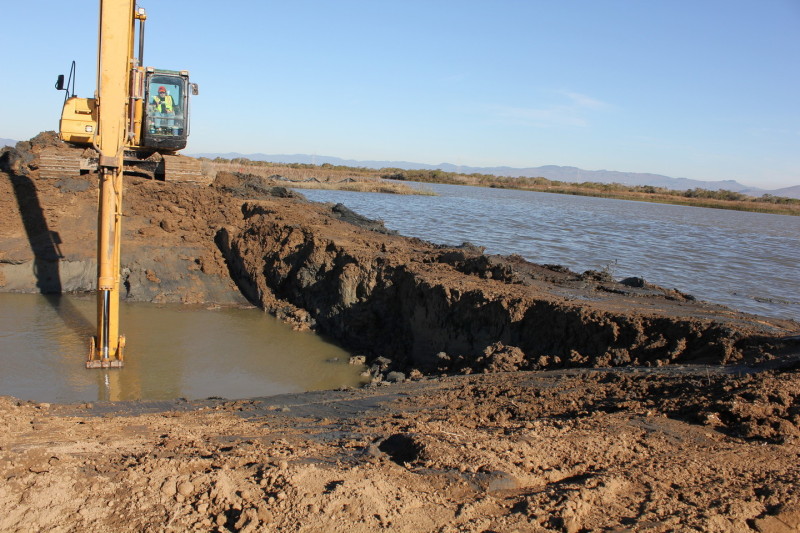As an eager crowd of conservationists gathers to watch an excavator scoop out the final portion of the old levee at the historic Cullinan Ranch, located at the north end of San Pablo Bay, it seems even Mother Nature can't wait.
"All right folks, let's move on in here. The site's going to breach on its own if we don't get going!" says Russ Lowgren of Ducks Unlimited, the conservation nonprofit that engineered the technical aspect of this effort to restore tidal flow to former farmlands after more than a century.
When the final bit of earth was removed on Tuesday, bay waters began to rush down to the vast landscape underneath. After years of hay and oat production, the 1,500-acre site sunk 4 feet below sea level.
San Francisco Bay National Wildlife Refuge Complex manager Anne Morkill says the project involved careful planning to avoid erosion of the adjacent Highway 37.
"This project is a key piece of the puzzle in restoring the lost wetlands of the north San Francisco Bay," says Morkill.
